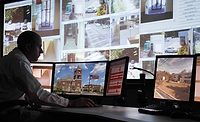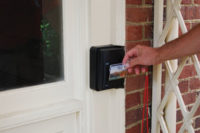Managing At the Speed of Tech
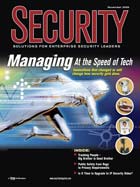
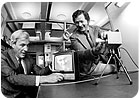
Yesterday – Dr. Willard Boyle and Dr. George Smith invented and developed the charge-coupled device. CCD technology, which transforms patterns of light into useful digital information, helped create digital security video.
As legend goes, a knotted rope became a famous symbol of security. Intricately tied by Gordius, King of Phrygia, and known by his name, the Gordian Knot secured the yoke to the shaft of his chariot. Back then, the biggest name to out think that technology was Alexander the Great. When he failed to undo the Gordian Knot, he cut it with his sword.
Fast-forward to 1969 and say hello and thank you to Dr. Willard Boyle and Dr. George Smith. These two invented and developed the charge-coupled device. CCD technology, which transforms patterns of light into useful digital information, is the basis for many forms of modern imaging. Today the most noticeable impact is its universal use in digital cameras, video cameras, barcode readers and image scanners such as copy machines. Both Boyle and Smith were members of the Semiconductor Components Division at Bell Labs and began their seminal work on the CCD in the late 1960s.
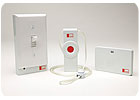
Today – The miniaturization of security video means that cameras can integrate into numerous gear.
HONORED FOR CCD INVENTION
Early this year, Boyle and Smith were recipients of one of the highest honors in engineering, the National Academy of Engineering’s Charles Stark Draper Prize, for their invention.Rod Alferness of Bell Labs, now an arm of Lucent Technologies, said “The CCD is one of those crucial breakthroughs that lead to innovations in sometimes unexpected areas. In fact, research continues to build on Boyle and Smith’s breakthroughs in areas as diverse as nanotechnology and advanced photonics for applications in communications, next generation computing and homeland defense.”
By 1970, the Bell Labs researchers had built the CCD into the world’s first solid-state video camera. In 1975, they demonstrated the first CCD camera with image quality sharp enough for broadcast television.
One of the inspirations for Smith and Boyle was the challenge of creating a new kind of semiconductor memory for computers; another was the development of technology for video telephone service, which required solid-state cameras. In the space of an hour on Oct. 17, 1969, they sketched out the CCD’s basic structure, defined its principles of operation, and outlined applications including imaging as well as memory.
Today, CCD technology is pervasive in video applications that range from security monitoring to high-definition television, and from endoscopy to desktop videoconferencing. Facsimile machines, copying machines, image scanners, digital still cameras, and barcode readers also have employed CCDs to turn patterns of light into useful information.
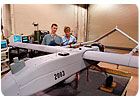
Tomorrow – Wireless security video, built into unmanned aerial surveillance “drones,” will patrol numerous military, government and enterprise facilities. Some drones can be hand-launched.
VIDEO MOVES TO NETWORK AND IP
Smith and Boyle never imagined how security video innovations will speed up in development. Flip to 2006 and video talk centers on IP thanks to high-speed, high-bandwidth pipelines, better compression schemes now using meta-data labels and computer software that bring intelligence/analytics to the camera or the display or storage such as digital video and network video recorders or all of them.Of course, before digital video or smart cards or biometrics or card access controls, there were those keys and locks. Locks and keys were known long before the birth of Christ. At that time, locks were made of wood. They were large and crude in design; yet their principle of operation was the forerunner of the modern pin-tumbler locks.
As lock-picking became an art in the 18th century, the inventors met the challenge of the burglar with increasingly complicated locking mechanisms. Among the new improvements were keys with changeable bits, “curtain closed-out” around keyholes to prevent tampering, alarm bells combined with the action of the bolt, and “puzzle” or ring padlocks, with this principle developing into dial face and bank vault locks, operating without keys and known as combination locks.
A more recent key and lock innovation is master keying and interchangeable cores in which the loss of one key would not affect all business locks. Then suddenly this year, companies that make traditional door hardware are now integrating a finger biometrics reader into a door knob.
While most doors still boast keys and locks, thanks to a combination of electric and electromagnetic locks and electronic card access controls, the innovation bandwagon moved to barcode, magnetic swipe cards and Wiegand cards before the industry moved on to proximity cards.

Innovation means greater, deeper security. In waterways that stretch from Port Arthur, Texas to the east and Corpus Christi, Texas to the south, Coast Guard Captain Richard Kaser, commander of the Houston and Galveston region, has to video monitor the largest domestic shipping operation in the United States. “We made significant progress since Desert Storm in terms of asset visibility and the need for a policy regarding technology,” said Kevin Carroll, the Army’s program manager.
FROM WIEGAND TO PROX AND BEYOND
In the early days of card access control, the big innovation was the Wiegand effect. A Wiegand card looks like a credit card. It works according to a principle similar to that used in magnetic stripe cards. But instead of a band of ferromagnetic material, the Wiegand card contains a set of embedded wires. The wires are made of a special alloy with magnetic properties that are difficult to duplicate. This makes Wiegand cards virtually counterfeit-proof. The set of wires can contain data such as credit card numbers, bank account numbers, employee identification information, criminal records or medical history.Today, chief security officers expect and buy access control software using standard databases, integration capabilities through APIs and simplified displays with networking connections. There’s IP-based access and systems which have moved to security management platform designs.
As access spread, some end-users discovered that they were carrying a wallet load of cards and the next step innovations would spread simplicity for doors, parking lots and soon computers and networks.
Enter biometrics.
The term is derived from the Greek words bio (life) and metric (to measure). The ideas of biometrics have been around for many years. Possibly the first known example of biometrics in practice was a form of fingerprinting used in China in the 14th century, as reported by explorer Joao de Barros. He wrote that the Chinese merchants were stamping children’s palm prints and footprints on paper with ink to distinguish the young children from one another.
In the 1890s, an anthropologist named Alphonse Bertillion sought to fix the problem of identifying convicted criminals and turned biometrics into a distinct field called “Bertillonage.”

Innovation means simplicity. According to Chris Marra, security manager, Hennepin County, in today’s world, providing adequate security can be a complicated affair. Traditionally, security systems have been an afterthought. Roughly five years ago, he decided that a new approach was necessary. Advances in technology had reached the point that they were able to envision a central security system that would interface with and support the 122 satellite facilities operated by Hennepin County.
DIVERSE APPROACHES
With growing business demands for identification, there is a need for new devices that are ever more accurate, cost effective and simple to use.Finger/Thumb Print -- This is the most widely used biometrics technology. Upon enrollment, an algorithm holds data in a central database or reader or on a smart card.
Retina and Iris Scan -- Retina and iris scans have become very popular with corporations, government agencies and some banks because of the accuracy and speed in which they can be implemented.
Hand Geometry – Very popular with time and attendance as well as access control, hand scanners can handle biometrics identification indoors and outside.
Face Recognition -- It tests the distinguishing marks and measures of an individual human face. This technology has become popular in recent years due to the increased speed of computers. Also, it can be implemented quickly and is one of the least physically intrusive biometrics.
Another security innovation, smart cards are joined “at the chip” often to biometrics.
A smart card is a plastic card in which an integrated circuit, or chip, is embedded. Systems using smart cards have multiple point-of-service terminals, or readers, which communicate with the card and with a central host computer system. The development of smart cards dates back to the 1970s, when patents were filed in France, Germany and Japan. Penetration of smart cards is higher in the Pacific Rim and Europe to today.
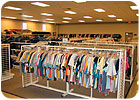
Innovation means cost savings. “To us, this is such a boon because the money we need is for the children,” Assistance League’s Margy Purdue-Johnson said. With a goal of providing greater security and access control to the Las Vegas-based Assistance League facility, doors were installed with high-tech wireless access.
SMART CARDS GET TOE-HOLD
The first mass rollout of smart cards took place in 1992, when the cards were adopted by all French banks. But what started as an electronic device to store bank account information securely has evolved into a sophisticated computing device capable of supporting many different applications, including physical and logical security, on a single card or token.The components of a smart card include:
- A CPU for managing data, executing cryptographic algorithms and enforcing application rules.
- ROM for storing operating system (OS) software. Some vendors offer flash EEPROM15 as an option to ROM.
- RAM for temporary storage of data.
- Electrically erasable programmable read-only memory (EEPROM) for storing variable data, such as cardholder information, passwords, and transaction details.
- Card OS software for controlling one or more applications.
- Application software, dedicated to one application or supporting multiple applications.
- Dedicated hardware security features that prevent access to software and data stored in memory from physical or logical attacks.
- Optional additional processors for rapid encryption functions.
- Data transmission over a bidirectional, serial terminal interface.
- Execution control and instruction processing.
- Protection of access to data.
- Memory management.
- File management.
- Management and execution of cryptographic algorithms.
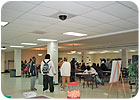
Innovation increases surveillance. Leo Brown, Sr., chief of police, Southwest Tennessee Community College, reported a drastic drop in crime after a security video system was installed.
Identification and wireless combine in security innovations that can ID, track and locate objects, people and event pets. Radio frequency identification or RFID is a generic term for technologies that use radio waves to automatically identify objects such as products in a store, or equipment used by a company. It also has applications for use within pets as well as people.
RFID is a fairly new advance, but there are already several methods of RFID identification available on the market. However, the most frequently-used method is to store a serial number that identifies a person or object, and perhaps other information, on a microchip that is attached to an antenna (the chip and the antenna together are called an RFID transponder or an RFID tag). This process is called RFID tagging.

Innovation means doing more with less. Louis Burdulis is no stranger to thinking outside of the box. Burdulis is security director at BMC Software. With a directive to “do more with less,” he’s responsible for improving the quality of BMC’s security guard force without “breaking the budget.” His approach: to construct a balanced mix of security staffing and technology to create a more secured environment in his lobby, for example.
RFID TRACKS OBJECTS, PEOPLE, VEHICLES
The antenna in the RFID tag enables the chip to transmit the identification information to an RFID reader. The reader reads the radio waves reflected back from the RFID tag into information that can be digitally sent to a computer or computer network. Software is then used to make use of the data RFID provides, such as improved inventory control and theft deterrence.Before electronic access cards, biometrics, RFID and smart cards, there were laminated photo ID cards, often created on site using Polaroid instant film. Next step innovations include image capture by video cameras and printing of the photos, logos and card information on PVC material using thermal transfer technology and desktop printers. printers. Newer tech advances center on rewritable photo IDs.
The growth of ID cards has lead to controversies related to a so-called national ID card, long advocated as a means to enhance national security, unmask potential terrorists and guard against illegal immigrants. They are in use in many countries around the world including most European countries, Hong Kong, Malaysia, Singapore and Thailand. Currently, the United States and the United Kingdom have continued to debate the merits of adopting national ID cards. The types of card, their functions and privacy safeguards vary widely.
Americans have rejected the idea of a national ID card. When the Social Security number (SSN) was created in 1936, it was meant to be used only as an account number associated with the administration of the Social Security system. Though use of the SSN has expanded considerably, it is not a universal identifier and efforts to make it one have been consistently rejected. In 1971, the Social Security Administration task force on the SSN rejected the extension of the Social Security number to the status of an ID card. In 1973, the Health, Education and Welfare Secretary's Advisory Committee on Automated Personal Data Systems concluded that a national identifier was not desirable. In 1976, the Federal Advisory Committee on False Identification rejected the idea of an identifier.
In response to the tragic events of Sept. 11, 2001, there has been renewed interest in the creation of national ID cards.
SideBar: Tomorrow: Biometrics to Come?
DNA Identification – DNA is often called the code of life and is known to be totally unique for each person. The reason that DNA identification is so popular is because it is perhaps the most precise system of identification known, and is widely accepted as absolutely accurate. This is good from the standpoint of identification purposes but could prove to be a major problem in the future. For instance, one of the most popular methods of taking DNA is by taking blood samples.Another problem with DNA is that it is you. With the human genome project well underway, scientist may soon know someone’s physical faults, such as Attention Deficit Disorder or alcoholism, by simply viewing their DNA. If a nationwide network of DNA information is made, there might be only a couple steps until everyone’s biological flaws are revealed.
Vein Pattern Identification – Seen recently at security exhibits, this technology is like a retinal scan in that it uses special light to produce an image of one’s vein pattern in their face, wrist or hand. An advantage to this technology is that veins are stable throughout one’s life and cannot be tampered with.
Ear Shape Identification – In recent years, some have come to recognize that the ear is as unique as a fingerprint. This technology merely measures the geometry of the ear.
Body Odor Identification – This system uses a sensor that takes your hand to identify your body odor. It then stores it in a digital database. This product is still in testing and when released may be too expensive for normal commercial use.
Body Salinity Identification – This technology exploits the natural level of salinity in the human body, which is accomplished by an electric field that passes a tiny electrical current through the body. As of now, individuals’ salinity levels are believed to be unique, but biometric identification is not the only use that we may benefit from this emerging technology. The electrical current, which passes through the body, can also carry data. Transfer rates, equivalent to a 2400-baud modem have been claimed. This technology could include interaction between communication devices carried on the body such as watches or mobile phones.
SideBar: Real Big Price Tag for Real ID
The National Conference of State Legislatures released a report on the Real ID Act, which estimates that that the cost to the states will be more than $11 billion over five years. The federal Real ID Act creates national standards for issuing state drivers licenses and identification cards. States also expressed concern regarding the application of the Drivers Privacy Protection Act to the records retention and information sharing requirements of Real ID.In addition, security and privacy problems have delayed implementation of the Transportation Worker Identification Credential program. TWIC is a Homeland Security program designed to screen the backgrounds of and issue biometric ID cards to the nation's 750,000 air, land and sea transportation workers. TWIC implementation is being watched closely, as it has many aspects similar to the REAL ID card. REAL ID mandates federal requirements for state drivers licenses, and it requires state DMVs to verify identification documents, such as birth certificates.
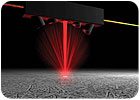
SideBar: Tomorrow: Coming from a Lab Near You
Verifying Objects by Laser -- Invented by Prof. Russell Cowburn of Imperial College London, Laser Surface Authentication reads the surface of the inherent structure of an object using a low cost laser scanner to identify the unique surface imperfections at near nano-scale (to effectively generate a naturally occurring "fingerprint"), converts that data into a number and then stores this number securely in a database. The authenticity of the document, packaging or object can be subsequently verified by another simple scan, with a handheld scanner, which will check against the existing stored “fingerprint.” Used to prevent the counterfeiting of pharmaceuticals, tobacco, passports, ID cards, etc.Convergence Security of Digital Assets – Secerno.SQL detects and prevents abnormal transactions from reaching the database by building a model to understand its normal usage. It helps security personnel to control access to the database to ensure it meets the ongoing business and security requirements.
Walking as a Biometric – ScanWalk is uses so-called "gait" biometrics. The brainchild of Haydn Kelly, it identifies individuals by the way they walk with the ability to check for existing entries. Such systems will potentially open up new dimensions in both preventative and investigative activities.
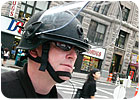
Security video will continue to go mobile with cameras in vehicles and integrated into security officer and law enforcement equipment and clothes.
SideBar: Today: Remote Viewing Everywhere
When Smiths Detection acquired LiveWave, a U.S. company that has developed software systems which network large numbers of sensors and video cameras with connections to remote viewing and recording stations, the future was set. LiveWave specializes in digitally enabling security video systems for enterprise-wide network distribution, which is considered a core technology for an increasing number of security applications. Such firms as LiveWave deploy numerous physical security solutions for early warning, detection and response, public safety, port and refinery security and operational safety.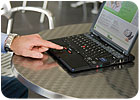
Expect biometrics access control to move to the Internet as convergence brings together physical and logical needs.
SideBar: Today: Convergence Moves to Identity Management Over the Internet
Welcome to biometrics on the Internet. Pay By Touch has TrueMe, what it says is the first secure, on-demand biometric authentication service on the Internet. It gives PC users a fast, easy and secure way to identify themselves, interact and transact on the Web using their fingerprints. By simply sliding a finger on a TrueMe-certified finger sensor, users can securely access their Web-based accounts with no need to remember IDs, passwords and account numbers.TrueMe enables businesses to provide customers, partners and employees with secure, authenticated access to their computers, desktop applications and password-protected Web sites and services such as online banking, e-commerce and Internet service providers.

SideBar: Today: License Plate Recognition Via Video
Mobile license plate recognition is helping the University of Southern California Transportation – Parking Enforcement expedite parking enforcement on campus. The CarCatcher system licensed by InPlay includes a customized recognition software engine that can be applied for a wide range of license plate recognition applications. For the University of Southern California, the mobile system enables parking enforcement officials to monitor an entire campus in a very short amount of time. CarCatcher scans license plates, matching them to a list of scofflaws provided by the university.“In the first 20 minutes of our initial test run of the CarCatcher system, we caught three offenders with over $1,700 in unpaid citation fees,” said Kenneth Marshall, assistant manager transportation services – administration.
Kuhn added, “Return on investment from these systems is incredible given the increased efficiency in collections with less manpower. In addition, universities often see a decrease in parking violations once students become aware that the campus is patrolled by the automatic license plate reading system.”
Looking for a reprint of this article?
From high-res PDFs to custom plaques, order your copy today!





